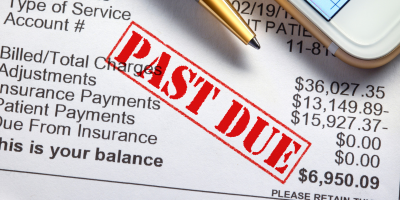If you want to be successful when it comes to meeting your financial goals, it’s important to get a grasp on that money situation. This series, How to Implement a Budget and Achieve Your Goals, will help you do just that.
If you missed the earlier installments of the series, I highly recommend you check them out first (Part 1: Income and Part 2: Fixed Expenses).
I hope you were able to get your fixed expenses into some semblance of order. If you still have outliers, no need to worry, we’ll find a place for them today.
Variable Expenses
I mentioned Variable Expenses in that last installment, but we didn’t elaborate on what those expenses might look like in your budget.
A variable expense is anything that may not be the same from month to month. Often these expenses include items such as clothing, shoes, accessories, and other items along that line. They won’t always be present every month, but it’s critical to budget a certain amount each month for that category, even if it might carry over until you need it.
Create Variable Expense Funds
One of my favorite ways to plan for and keep track of those pesky variable expenses is to create “funds” within my budget. The idea is that I will budget how much money I will need for each expense throughout the year and divide that yearly amount by twelve. I then add that amount to my monthly budget and know over the course of the year, I will be accounting for most, if not all, of that categories’ expenses. The best part: it won’t come as a surprise to me when that expense comes up.
For example, we have three cars that all come up for registration during the same month. At $60 plus per registration, it’s a sizeable chunk of change that could easily derail our budget in the middle of the summer if we didn’t plan ahead. Knowing that ($60 x 3) is the yearly amount, I ran the calculation and then divided that total by three for a total of $15 per month.
While that $15 might not seem like much in any given month, if I choose to wait until the bill comes in, I might find myself having to sacrifice the food budget or something else in order to pay for it.
Create funds, they’ll make your life so much easier and will keep you from resorting to lines of credit!
Of course, you can create any fund your family needs, but I’m going to discuss a few funds that I believe should be addressed in every family budget.
Seasonal
There’s always that change in seasons that brings with it a need to spend additional money to have the right clothing (warm in the winter, cool in the summer), insulate that front door, wash the windows, or replace a broken screen. When you notice that you have certain expenses that only creep up during specific seasons of the year, they should be categorized under seasonal.
Set aside a certain amount each month so that when those expenses creep up, you are ready to tackle them.
Birthdays
For some reason, birthdays always throw me off my game, and it really shouldn’t be that way. I mean, they never change – they always come on the same day of the month every year.
My whole life changed, and so did our finances, when I started to plan ahead for birthdays. How did I do it? By creating a fund. I decided how much I was willing to spend on each birthday throughout the year, added it all up, and divided it over the twelve months of the year. Not only does it mean that I have the necessary money to pay for birthday expenses with wrecking the budget, but it also has set a limit on the amount we spend on birthdays.
No one has complained so far, and it’s been nice to have birthday months be fun, rather than stressful.
Holidays
Is anyone still reeling from the holiday season expenses of last year, or already dreading the cost that this year might bring? As I did with the birthday fund, I created a holiday fund as well, and it was relatively simple.
Add up the number of people you will be shopping for and multiply it by a certain amount per person. Keep in mind that if you are responsible for hosting a dinner or party, that those expenses should also be included, as well as any additional decorating expense. Once you have that amount, simply divide it by the twelve months and add it to your monthly budget.
School Year
I could go on and on about the expenses that come along with the school year. If you have kids in school, a spouse that’s a teacher, or are even helping out your grandkids, I highly suggest setting up a fund in your budget to do so.
Looking for some tips on how to do that? A while back I wrote a whole blog post focused on School Year Budget Survival Tactics and you can find it HERE. (There’s even a fun printable to help you out!)
Miscellaneous
My favorite fund to have is the miscellaneous one. It doesn’t suit any purpose except to collect the expenses that don’t fit into any other category. I don’t even so much use it as a fund, in that it rarely carries over from month to month, but it allows for a little buffer in the budget and makes it less stressful when a small “unexpected” expense comes up.
It’s Your Turn:
What funds do you need to include in your budget? Make a list of them using the FREE printable worksheet and run some simple calculations to determine what you might need to contribute to each fund each month in order to be successful year-round.
If you are looking at your budget and wondering how you will make it all fit, don’t despair, and instead continue on to the next part of this series.



